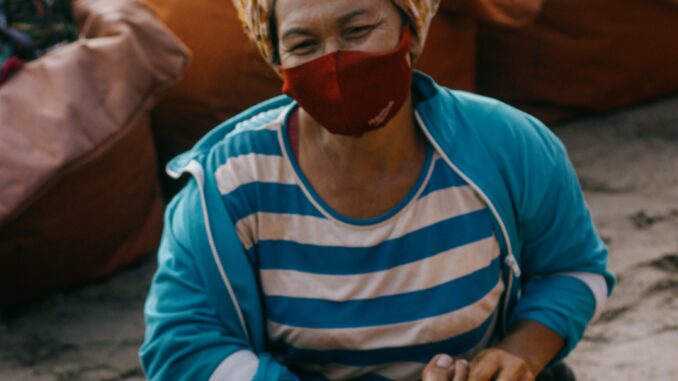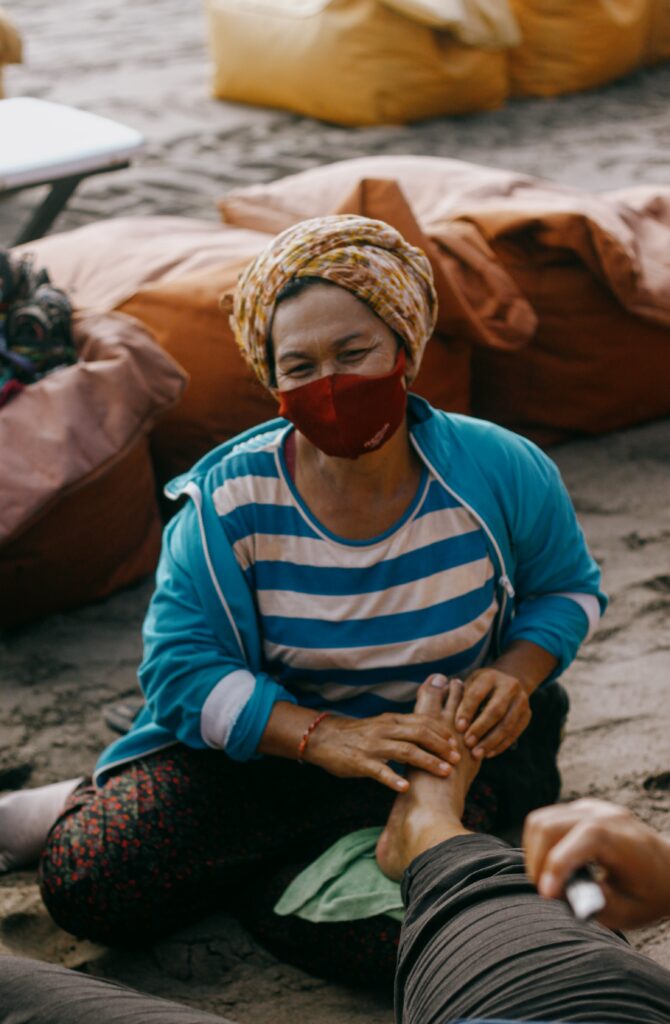
This type of massage, originating from Bali, combines various Far Eastern healing arts. Traditional full body massage involves mainly stroking and kneading with the palms, fingers and even the forearms. Depending on the patient, joints are also mobilized and stretched, and acupressure is applied.

There are two different types of Balinese massage. Urut is used for medical treatments, requiring knowledge of acupressure points and neuralgic nerve pathways. The somewhat simplified method is Pijat, which requires little technical skill and is easy to learn.
The multicultural origin of the healing method
Due to trade with the island of Bali, the Balinese came across Indian and Chinese massage styles and healing methods. The guests from India and China brought them valuable knowledge about acupressure and the teachings of Ayurveda. They then combined this with their existing massage culture.
A Dutch doctor documented this particularly effective type of massage for the first time in 1930. Nowadays it is spread all over the world and becomes more and more popular.
The traditional process consists of up to 95 steps
These include washing, massage and aftercare. To optimize the effect of the oils used, the whole body is washed first. Most often, a coconut oil is then heated, which not only smells pleasant and moisturizes the skin, but also has healing properties. However, many other oils can be used, depending on the needs of the patient.
At the beginning of the massage the patient lies down on the stomach. The masseur first works on the legs and feet. Always start on the right side.
Then the acupuncture points of the back are pressed from the top down.
The back and shoulders are worked with kneading, stroking and fist rolling.
The patient then lies down on his back. So around again treated feet, legs, arms and hands. Always first right and then left.
At the end you can still massage the face, head and neck.
The after-treatment can consist of a body peeling with Lulur, a body wrap with Boreh/Parem, a steam bath or flower bath.
Often sound meditations are also integrated into the process.
There are variations of the process in different countries. In Germany, for example, usually only a foot washing is performed instead of a full body washing.
The multiple positive effects help the body to heal itself
Balinese massage has not only physical but also psychological effects. It can provide relief from very many ailments.
One treatment
- relaxes the muscles and tissues
- Leads to deep relaxation and increased well-being
- relieves tension
- promotes blood circulation
- Makes more stress resistant
- gets the circulation going
- Gives energy
- Makes more agile
- brings the “Qi”, our life energy, to flow
- improves tissue metabolism
- restores inner harmony
- transports toxins out of the body faster
- helps with sleep disorders and headaches
- strengthens the immune system
The special thing about Balinese massage is that the person is seen as a whole
The interaction of the entire body is taken into account and brought into harmony with the mind. The method acts on the meridian system and brings it into balance. Deep-seated energy centers of the body are also reached here. Because only in this way can complaints really be alleviated or diseases cured.
In the Balinese healing tradition and many others, it is taught that the body is capable of healing and regenerating on its own. However, this is only possible if you have found your inner center. For this purpose, this massage is ideal.
